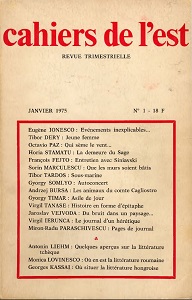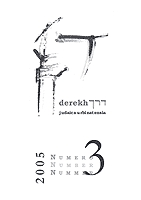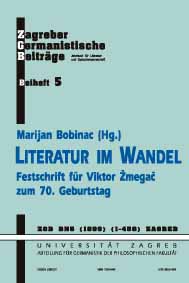



Keywords: Ludvik Vaculik; Paul Goma - Elles étaient quattre; François Fejtö - L'Heritage de Lenine;
More...
Keywords: etymology; diachrony; language contact; areal linguistics; linguistic history
The following review article deals with the dilettantish attempts of cAbdal-Ḥaqq Fāḍil to connect German and Arabic in the sense of genetic language relationship. The author of the book under review is neither able to clarify whether he means “German” or “Germanic”, nor whether he wants to postulate Arabic as a kind of worldproto-language or to create a new language family. In addition, he ignores all well-known Lautgesetze (sound laws) as well as all researches in the field of historical linguistics of the last two hundred years.
More...
Keywords: etymology; diachrony; language contact; areal linguistics; linguistic history
In 2006 Thomas O. Lambdin brought out An Introduction to the Gothic Language. Every lesson is followed by vocabulary notes that include etymologies. Most of them were borrowed from well-known dictionaries, but a few are new. The paper contains comments on those etymologies.
More...
Keywords: etymology; diachrony; language contact; areal linguistics; linguistic history
Some methodological problems of a new dictionary project are discussed here. It is also argued against the suggestion that the Ukrainian word banuš ‘a sort of mamaliga’ is a derivative of Turkish bal ‘honey’.
More...
Gretel Adorno: Walter Benjamin. Briefwechsel 1930-1940. Herausgegeben von Christoph Gödde und Henri Lonitz. Frankfurt am Main, Suhrkamp Verlag 2005, 434 S. Hans Keilson: Romane und Erzählungen, Gedichte und Essays. Hg. Von Heinrich Detering und Gerhard Kurz. S. Fischer Verlag, Frankfurt am Main 2005, 2 Bände, 587 u. 511 S. Jews in the bulgarian lands. Ancestral Memory and Historical Destiny, Emmy Barouh (ed.), Judaica Bulgarica, International Center for Minority Studies and Intercultural Relations, Sofia 2001 (ISBN 954-8872-35-8) Moshe Zimmermann, Deutsch-jüdische Vergangenheit: Der Judenhaß als Herausforderung. Paderborn, München, Wien, Zürich, Ferdinand Schöningh Verlag 2005, 308 S.
More...
Well into the 1990s, the scholarly discourse on the relationship between Jews and Christians in the Middle Ages was generally approached from two directions, both heavily infl uenced by ideology and largely mutually exclusive: One position can be characterized somewhat simplistically by the term of ”symbiosis”. It presupposes a more or less undisturbed co-existence of Jews and Christians and a Jewish participation in Christian culture. This position was generally favoured by the representatives of the ”Wissenschaft des Judentums” in the late 19th and early 20th century. The other position is opposed to this concept. Representatives of this position stress the total isolation of the Jews in the context of a Christian culture. Some scholars maintain that this isolation resulted from the hostility of the Christian world; others also emphasize a self-imposed isolation. An example is the statement of Michael TOCH in his introduction to the history of the Jews in medieval Germany (1998): “For the a very long time two opposing and mutually exclusive positions, each infl uenced by a different world view, have dominated the way in which we view the relationship between Christians and Jews in the Middle Ages. The fi rst position is characterized by the concept of confl ict and holds that Jews were largely, if not completely, isolated - an isolation that, depending upon the observer’s starting point, was either self infl icted or seen to have been imposed by an antagonistic environment. (...)
More...
Keywords: Hannah Arendt; Paul Celan; Bettelheim; Lévinas; Semprún; Sarah Kofman
More...
Keywords: Imre Kertész; Auschwitz; concentration camps;
More...








